In a recent post, Julian Tanase urged us to think about “stepping back” in photography, using simpler cameras to make us think more about what we are doing. This post is about my experience going in the opposite direction. The reason is that, before getting my first digital camera in 1999, the last film camera I bought was a Minolta 700si. Aside from having one of its two lenses stolen, when I put it down on a bench next to where I was sitting, I have few memories of using it, though I must have used it for a few years. All I remember is that when digital cameras were still rudimentary by modern standards (2 or 3 Megapixels, tiny screen and few controls) I took an OM camera on at least one trip, alongside digital, probably because I had a greater range of lenses for it. But in the past few months, exploring film again, I thought it would be interesting to try out the 700si again, so I put a roll of film through it.
Compared with OM cameras, let alone an old Leica SLR, the 700si feels more like a more modern DSLR, such as the Canons I used to use. Rounded, fairly large but comfortable to hold, with lots of polycarbonate. And a popup flash. A limitation of my camera, and the reason why it would have been pointless trying to sell it, is that the LCD display on the top of the camera no longer works properly. That is the result of leaving in the car on a sunny day with sunlight pouring down on it. Fortunately, that does not make it impossible to use. There is what I call a Panic button, labelled with a big P, that resets the camera to program mode and other settings to their defaults. The A and S for those modes still work, so the remaining mode setting has to be manual. Because of the damaged screen, I have no indication of how many exposures are remaining until it gets down to 9, when there is a count down shown inside the viewfinder, along with aperture, shutter speed and metering mode.
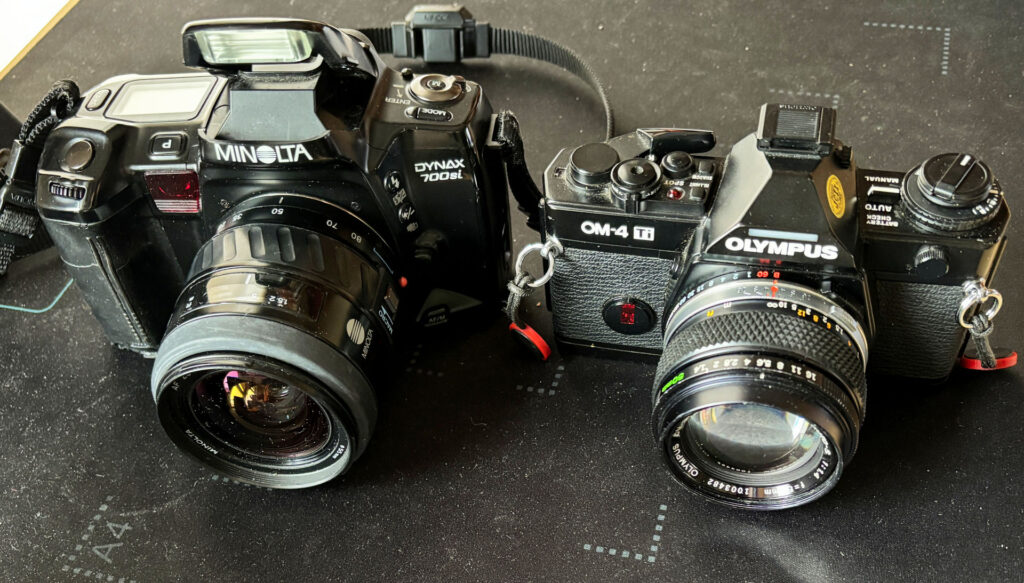 Loading the camera is easy, if disconcerting, as you just lay the film over the back and shut the door, making sure that the sprocket holes are lined up with the sprocket correctly. A motor then whirrs away for a few seconds, and when it stops you are ready to take a photo. Similarly, when the 36th exposure is taken, the motor whirrs again and the film is automatically would back into the cassette — all the way, so that I need to used a film extractor to get the end of the film out so I can load it into the developing tank. Maybe I could take the end of the cassette off using a bottle opener, but I have not tried. As someone who likes to be able to use the rewind crank to check film is loaded and moving on, it is a bit worrying to have to rely on the camera doing everything correctly, or it would be if I was on a mission critical project. Maybe the Minolta is easier to load than a Bronica 35mm back or a Leica (I’ve only seen pictures of that) but compared with most SLRs I am not convinced it is an advantage). I guess that DX coding reduced the chance of setting the ISO wrongly, but I can live without that.
Loading the camera is easy, if disconcerting, as you just lay the film over the back and shut the door, making sure that the sprocket holes are lined up with the sprocket correctly. A motor then whirrs away for a few seconds, and when it stops you are ready to take a photo. Similarly, when the 36th exposure is taken, the motor whirrs again and the film is automatically would back into the cassette — all the way, so that I need to used a film extractor to get the end of the film out so I can load it into the developing tank. Maybe I could take the end of the cassette off using a bottle opener, but I have not tried. As someone who likes to be able to use the rewind crank to check film is loaded and moving on, it is a bit worrying to have to rely on the camera doing everything correctly, or it would be if I was on a mission critical project. Maybe the Minolta is easier to load than a Bronica 35mm back or a Leica (I’ve only seen pictures of that) but compared with most SLRs I am not convinced it is an advantage). I guess that DX coding reduced the chance of setting the ISO wrongly, but I can live without that.
When it came to taking photos, the process was quick and easy. The autofocus was faster than I expected for an early 1990s camera, and it seems to have worked. I Left it in Program mode (using the Panic button), and let the camera choose the focus point, making it into a big point and shoot with some advanced features such focusing when you bring the camera up to your eye. I won’t go as far as saying that manual focusing leads to better photos because it forces me to slow down, but I found myself getting a little bored with everything being done for me. All I had to do was select the zoom and press the button. I could have done more manually, but nothing about the camera made me want to do that.
Generally the pictures came out well – perhaps a bit overexposed, or perhaps overdeveloped, but very uniform looking negatives that scanned fairly easily, even if the default was a bit flat and I had to alter the tone curve a bit.



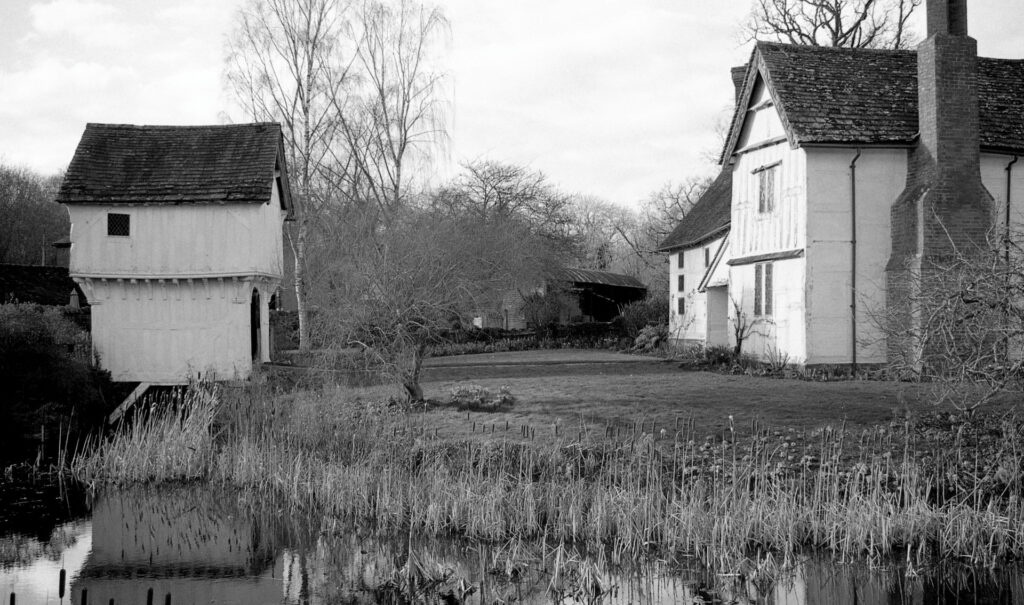

Will I use it again? Probably not in the near future, though if I wanted to do street photography with film the autofocus might make it a sensible choice though something smaller and less obtrusive, without the noise of the wind-on motor, would probably be better. My conclusion is simply that less automated film cameras are more fun. And I like to see more evidence that the film is winding on correctly, not to mention the chance to get 38 instead of 36 shots. Now for my five shots, where the main issues are related to composition, choice of subject and the photographer — nothing to do with the camera.
(Developed in Ordinal 1:50; scanned with Epson V700.)
Share this post:
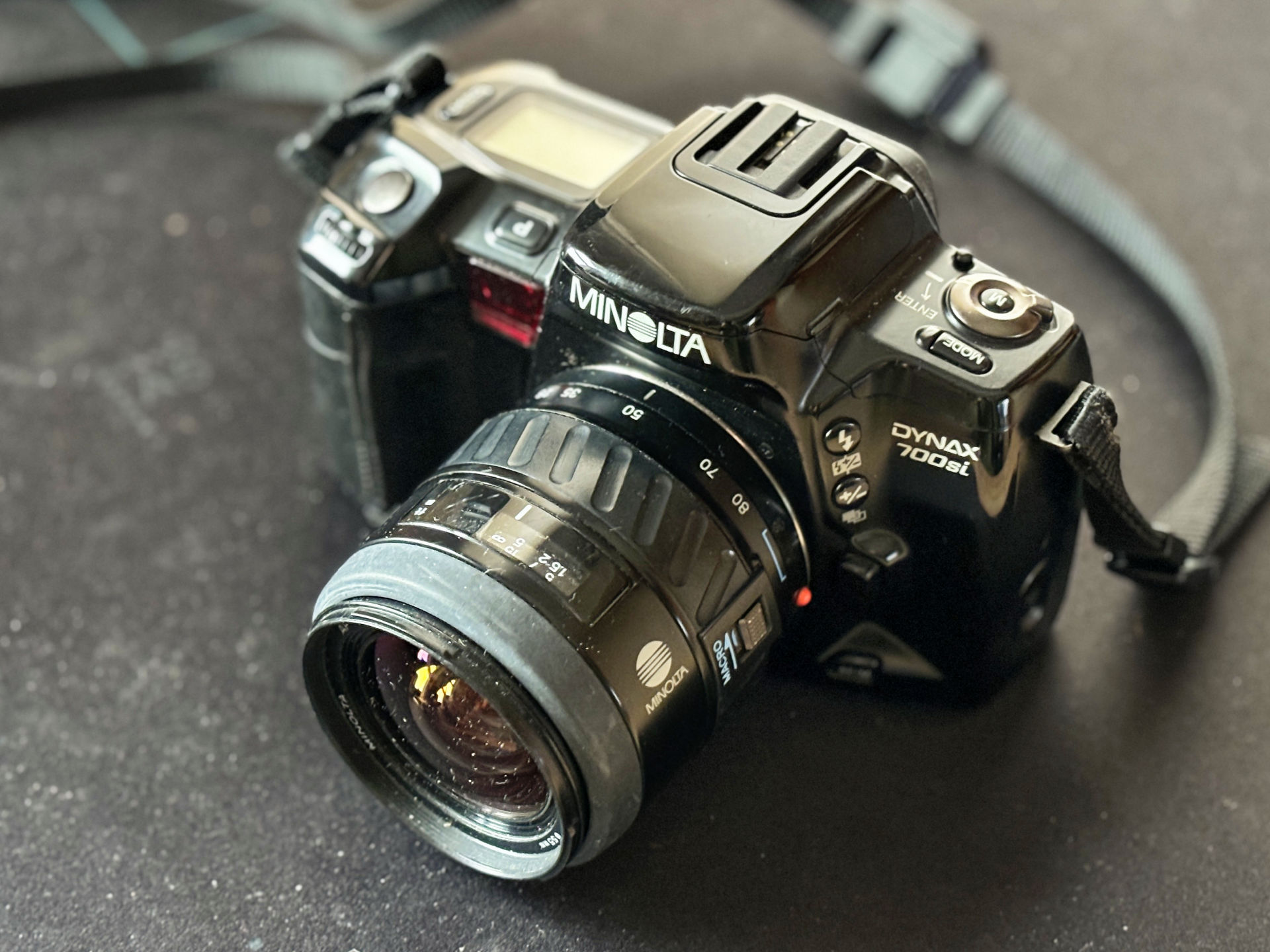
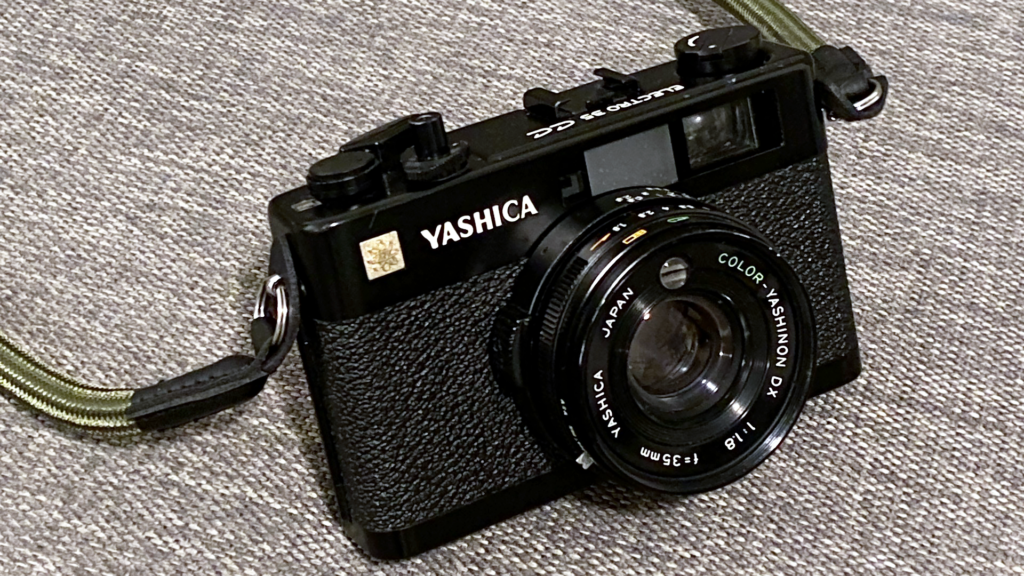
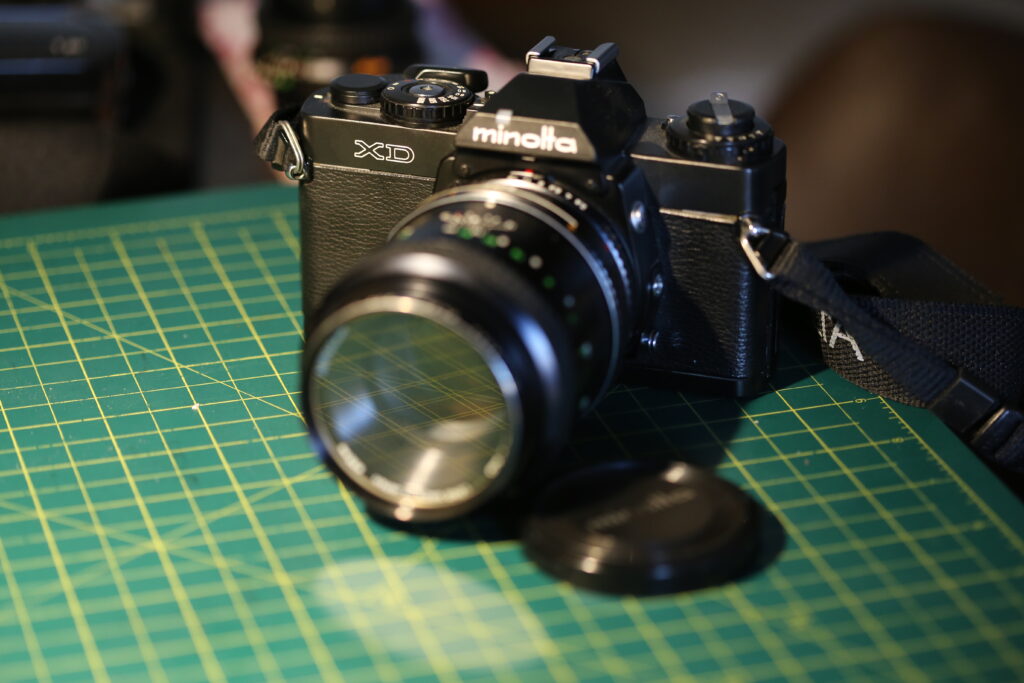
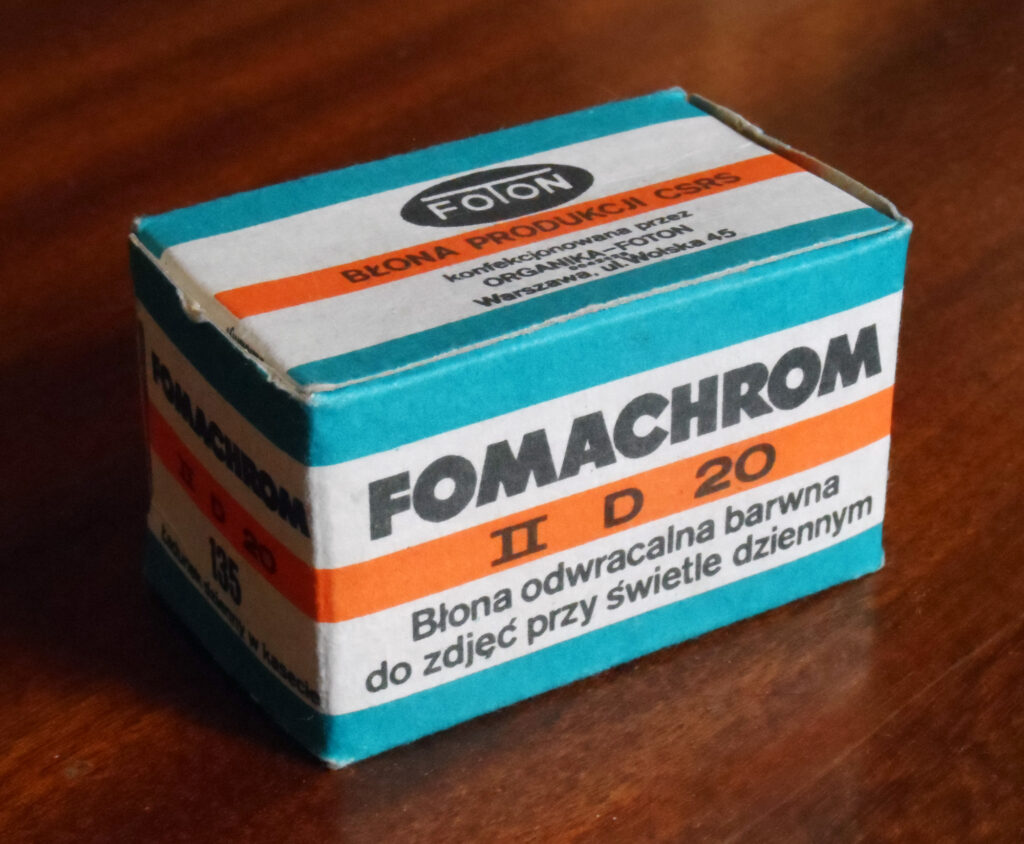
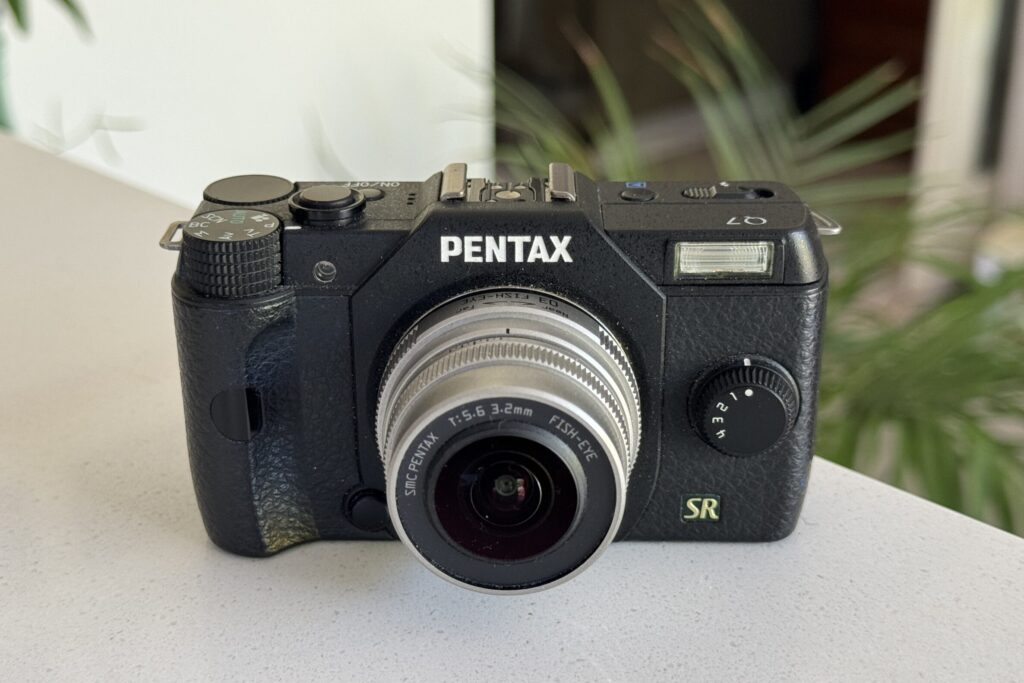





Comments
Roger on 5 frames with a Minolta 700si
Comment posted: 24/04/2024
Comment posted: 24/04/2024
Roger on 5 frames with a Minolta 700si
Comment posted: 24/04/2024
Comment posted: 24/04/2024
Comment posted: 24/04/2024
Bob Janes on 5 frames with a Minolta 700si
Comment posted: 24/04/2024
Nice shots. :-)
Comment posted: 24/04/2024
Comment posted: 24/04/2024
Comment posted: 24/04/2024
Comment posted: 24/04/2024
Comment posted: 24/04/2024
Steviemac on 5 frames with a Minolta 700si
Comment posted: 24/04/2024
Comment posted: 24/04/2024
Gary Smith on 5 frames with a Minolta 700si
Comment posted: 24/04/2024
Geoff Chaplin on 5 frames with a Minolta 700si
Comment posted: 25/04/2024
Comment posted: 25/04/2024
Comment posted: 25/04/2024
Ibraar Hussain on 5 frames with a Minolta 700si
Comment posted: 25/04/2024
Luckily the Minolta Dynax 7 has a feature which leaves the film leader out
The fun with automatic cameras is that the metering is usually more accurate but I do go through a lot of film with them !
Paul Quellin on 5 frames with a Minolta 700si
Comment posted: 27/04/2024
Roger on 5 frames with a Minolta 700si
Comment posted: 28/04/2024